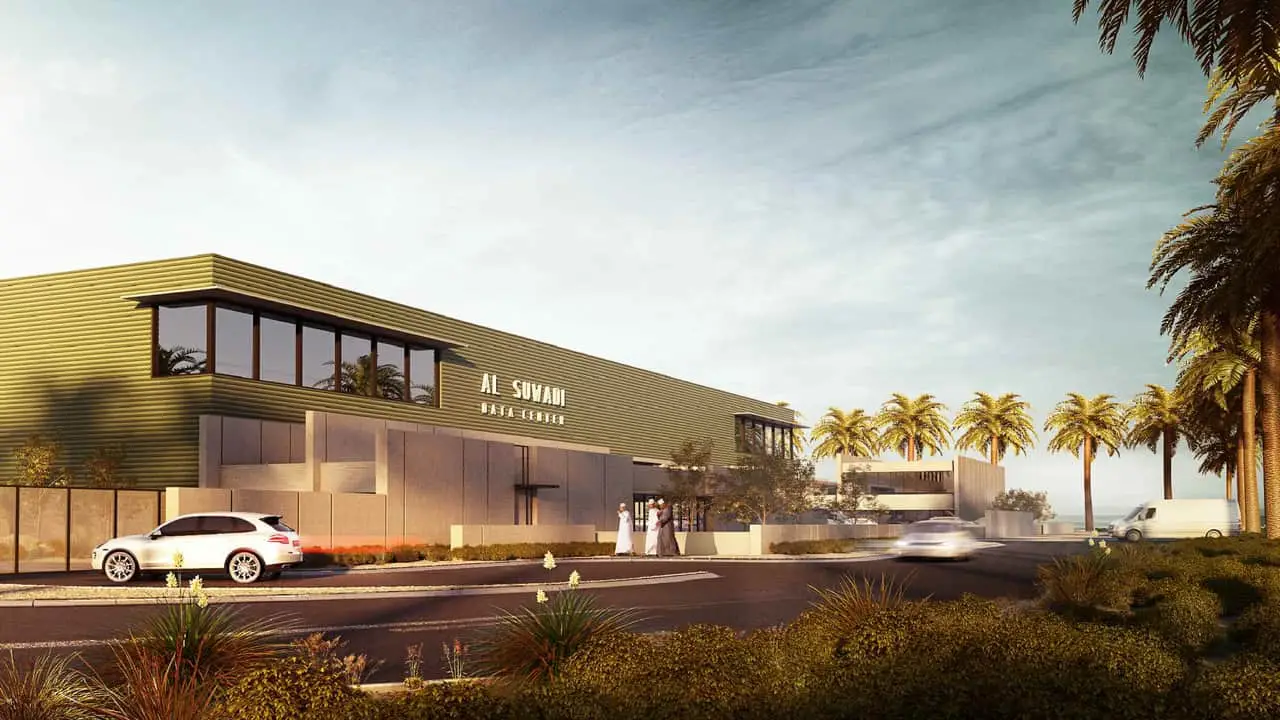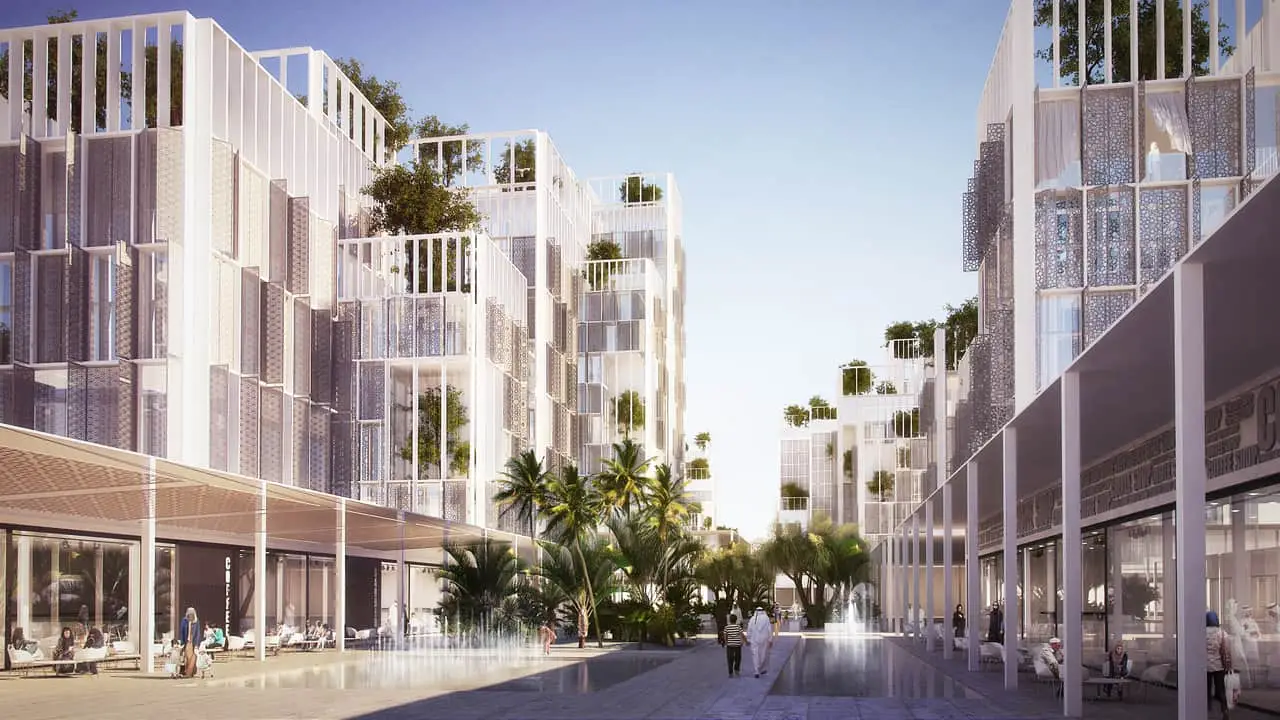Building a Resilient Future: Why is Environmental Risk Assessment in Real Estate Development Important?
What’s Hiding Beneath Your Next Project?
It’s easy to focus on the grand vision—a gleaming tower, a thriving community, a profitable investment. But beneath every real estate project lies a hidden story. Contaminated soil, unyielding flood zones, regulatory walls—the risks that don’t appear in glossy brochures but can derail even the best-laid plans.
Risk Isn’t Optional. Preparation Is.
Environmental risks aren’t obstacles to avoid; they’re challenges to master. A proactive assessment doesn’t just protect your project—it transforms uncertainty into opportunity. By the time you finish this guide, you’ll know exactly how to identify risks, address them, and build projects that are not only sustainable but also resilient and profitable.
Understanding Environmental Risks in Real Estate
What Could Go Wrong? Plenty.
Every piece of land has a past. Sometimes, that past haunts developers through contamination, natural disasters, or unexpected regulations. The risks aren’t always obvious—but the consequences are.
Three Risks Developers Can’t Ignore
- Contamination Risks: Industrial waste. Leaking underground tanks. Forgotten spills. These aren’t just legacy problems; they’re today’s financial sinkholes. Imagine buying land, only to spend twice as much cleaning it up.
- Example of a successful risk management strategy: A former industrial site might need years of remediation before it’s safe to build.
- Natural Hazards: Flood zones, earthquakes, hurricanes—Mother Nature isn’t part of your project plan, but she’s always a stakeholder. Properties in these zones demand reinforced designs and higher insurance costs.
- Example for success in commercial real estate: A commercial building near a fault line must meet seismic safety standards, inflating construction costs.
- Regulatory Compliance Risks include zoning laws, permits, and environmental regulations that change mid-project. Failure to comply with these rules can lead to delays, penalties, or cancellations.
The Real Costs of Ignoring Risk Assessment
It’s not just your budget at stake. Environmental issues can damage reputations, strain community relations, and lower property values. Buyers don’t want to invest in a property with a toxic legacy—or one prone to flooding.
The Foundation: Comprehensive Site Investigations
You Can’t Fix What You Don’t See
Every successful project starts with one essential step: knowing the land. Although your site may look perfect on the surface, contaminated soil, groundwater toxins, or underground storage tanks could be the reality below the surface.
In real estate development, guesswork isn’t an option.
Phase I: Reading the Land’s Story
Think of a Phase I Environmental Site Assessment (ESA) as detective work. You’re piecing together the property’s history to spot red flags.
- What It Involves: Review old maps and inspect the site for signs of contamination. Talk to players, owners, local officials, and neighbors for a more holistic picture.
- Why It Matters: The goal isn’t to solve the problem but to determine whether one exists. If the report reveals risks, it’s time to investigate further.
Phase II: Digging for Answers
When Phase I uncovers potential issues, Phase II takes the investigation to the next level.
- The Tools: Soil sampling, groundwater monitoring, and air quality tests that uncover what’s genuinely beneath your feet.
- The Outcome: A clear map of the risks and the steps needed to address them.
Modern Tools for Modern Problems
Technology is your ally.
- Ground Penetrating Radar: Reveals buried tanks or pipelines that could spell trouble.
- Drone Surveys: Provide a bird’s-eye view to spot hazards early.
- GIS Mapping: Turns raw data into actionable insights, showing risk zones at a glance.
Real-World Insight
A residential developer once purchased an industrial site. Phase I of the ESA flagged historical contamination. Phase II confirmed lead in the soil, forcing remediation. It wasn’t cheap, but it saved the project from long-term liability.
Navigating Regulatory Compliance and Due Diligence
Rules Aren’t Made to Be Broken
Do you think compliance is just red tape? Think again about the potential environmental impacts. It’s the invisible framework holding your project together. Skipping due diligence isn’t a shortcut; it’s a detour to costly fines, delays, and damaged reputations.
Laws That Shape Your Real Estate Projects
Environmental regulations aren’t suggestions—they’re the baseline for doing business. Here are the big ones every developer needs to master:
- Clean Water Act (CWA): Want to build or manage stormwater runoff near wetlands? This law decides how far you can go.
- Clean Air Act (CAA): Pollution from machinery and construction sites? The CAA enforces limits that can change your project specs.
- CERCLA (Superfund): If you uncover hazardous materials, you might be liable for cleanup—even if you didn’t cause the mess.
Practical Compliance Steps That Save Time and Money
- Document Review: Analyze deeds, assessments, and site records to unearth the past. Ignoring history invites future problems.
- Stakeholder Collaboration: Talk to local officials, environmental agencies, and community leaders. They don’t just hold approvals; they have insights.
- Real-Time Audits: Use tools that monitor compliance in real-time. Staying ahead of violations keeps your project on track.
Why Permits Are Your First Step, Not Your Last Liability
Permits aren’t paperwork—they’re strategy.
- Start early. Apply before the ink dries on your plans.
- Monitor regulations. Laws evolve, and staying informed is cheaper than adapting after the fact.
- Think local. Regional zoning codes often add complexity layers but also open doors to innovation.
A Lesson in Collaboration
A developer planned a project near protected wetlands. Instead of seeing regulations as a hurdle, they embraced collaboration. They involved local authorities early and adapted designs to reduce ecological impact. The results? They avoided legal trouble and gained community approval faster than expected.
Addressing Soil and Groundwater Contamination
What Lies Beneath Can Change Everything
It’s not just dirt. It’s a potential deal-breaker. Soil and groundwater contamination are silent threats that can transform a promising project into an expensive nightmare. Ignoring them isn’t an option—but solving them is within your reach.
The Usual Suspects
Every site tells a story. Some come with hidden villains:
- Heavy Metals: Arsenic and lead don’t just disappear. They linger from industrial sites, old buildings, or agricultural runoff.
- Petroleum Products: A leaking underground tank can seep fuel into groundwater, turning it toxic and unusable.
- Volatile Organic Compounds (VOCs): These pollutants invade the air and harm health. They are found near dry cleaners or chemical plants.
How to Uncover the Truth
- Soil Sampling: Dig deep—literally. Analyze soil layers to spot contaminants before they cause chaos.
- Groundwater Monitoring: Drill wells to assess water quality and uncover risks you can’t see.
- Geophysical Surveys: Use radar to map buried tanks or structures that might release toxins.
Fixing the Problem Before It Grows
Mitigation isn’t just damage control; it’s future-proofing.
- Excavation and Removal: Contaminated soil is replaced with clean fill.
- Example: A former gas station site where petroleum leaks required extensive soil removal.
- In-Situ Treatment: Chemicals or microbes neutralize contaminants on-site.
- Example: Bioremediation turned hydrocarbons into harmless byproducts.
- Containment: Barriers prevent toxins from spreading, protecting what’s safe while addressing what’s not.
When Risk Turns to Trust
A suburban developer inherited a site tainted by decades of pesticide use. Instead of walking away, they took action. Excavation addressed the topsoil, and in-situ treatment purified groundwater. The result? A thriving community built on land no one thought could be saved—and buyers who trusted the developer’s commitment to safety.
Managing Risks in Floodplains and Wetlands
Water Always Wins—Unless You Plan Ahead
Floodplains and wetlands aren’t just lines on a map—they’re nature’s warning signs. Ignore them, and you risk flooding your budget, not just your site. Respect them, and you unlock opportunities for innovation and resilience.
Floodplains: More Than Just High Water Marks
Flood zones bring unique challenges.
- Increased Costs: Properties in flood zones often face higher insurance premiums.
- Design Demands: Elevated construction, waterproofing, and drainage systems add to project complexity.
- The Risk of Doing Nothing: Without precautions, floods can wipe out years of investment overnight.
Example: A retail complex in Zone AE elevated its foundation by three feet, reducing flood risk and cutting insurance costs by 25%.
Wetlands: Nature’s Fragile Ecosystem
Wetlands aren’t just tricky to develop—they’re heavily protected.
- Strict Regulations: Zoning laws and permits restrict construction near sensitive areas.
- Ecological Impact: Disturbing wetlands can harm biodiversity and invite community backlash.
Example: A mixed-use project adjusted its design to preserve adjacent wetlands, using a buffer zone that earned public approval and regulatory ease.
Designing for Resilience
- Elevated Foundations Raise structures above base flood elevation to minimize water damage and enhance risk management.
- Case in Point: Coastal homes built on stilts withstood hurricane flooding while others nearby didn’t.
- Stormwater Management: Retention ponds, bioswales, and permeable pavement reduce runoff and improve water quality.
- Result: A residential neighborhood reduced storm damage costs by 40% with innovative water systems.
- Buffer Zones: Maintaining a green perimeter around wetlands minimizes disruption and shows commitment to sustainability.
Collaborate Early, Save Later
A developer planning an office complex in a floodplain brought environmental consultants from day one. Why? To incorporate flood-resistant designs and secure early permits. The result? The project was completed on time and under budget despite its challenging location.
Incorporating Sustainability in Risk Mitigation
Sustainability Isn’t a Buzzword. It’s Survival.
Developers who think green aren’t just following trends but safeguarding the future. Every sustainable choice reduces risks, cuts costs, and creates projects that stand out in a crowded market.
Eco-Friendly Materials: Build Smarter, Not Harder
The materials you choose today shape your project’s legacy tomorrow.
- Sustainable Options: Bamboo, recycled steel, and reclaimed wood minimize environmental impact without sacrificing quality.
- Example: A commercial building constructed with recycled steel reduced its carbon footprint by 30%.
- Cost Benefits: Renewable materials often last longer, reducing maintenance costs.
Energy-Efficient Design: Less Waste, More Value
Green design isn’t just about aesthetics—it’s about efficiency.
- Natural Lighting and Ventilation: Reduce energy dependency while creating spaces people love.
- Case Study: A residential complex that maximized natural light saw a 20% drop in energy bills.
- Solar Panels and Beyond: Renewable energy sources lower costs and attract eco-conscious buyers.
- Practical Insight: Pairing solar with energy storage systems ensures reliability even during peak demand.
Water Conservation: Use Less, Save More
Water is a resource, not a given.
- Rainwater Harvesting: Collecting and reusing rainwater for landscaping or cleaning reduces strain on municipal systems.
- Low-Flow Fixtures: Modern faucets and showers save water without compromising performance.
Green Infrastructure: Nature as a Partner
- Green Roofs: Vegetation atop buildings reduces heat absorption and manages stormwater.
- Result: A mixed-use property reduced cooling costs by 25% with rooftop gardens.
- Native Landscaping: Plants that thrive locally need less water and maintenance, cutting ongoing costs while enhancing biodiversity.
The Payoff: More Than Just ROI
A developer integrated solar energy, rainwater harvesting, and native landscaping into a mixed-use project.
What was the result?
LEED Gold certification, operational cost savings of 30%, and higher absorption rates. Tenants had to go on a waiting list to associate with a brand committed to sustainability.
Learning from Environmental Due Diligence Case Studies: Proven Success Stories
Lessons Aren’t Found in Theories. They’re Built in Action.
Behind every successful real estate project lies a moment of reckoning—a challenge that tests the vision and resolve to see it through. These stories aren’t just about overcoming obstacles. They involve comprehensive environmental response strategies. They’re blueprints for developers ready to learn, adapt, and lead.
From Toxic Ground to Thriving Community
A developer stood at the edge of a contaminated factory site. Heavy metals had leached into the soil, making the land seem worthless. Walking away was an option, but so was rebuilding.
- What They Did: They conducted a detailed environmental assessment, pinpointed contamination hotspots, and paired excavation with in-situ bioremediation.
- What Happened: That wasteland became a vibrant residential neighborhood. Property values soared by 40%.
- Why It Mattered: They didn’t just clean the land. They rebuilt trust—proving that even the most toxic beginnings can have a profitable future.
Beating the Odds in a Flood Zone
Floodplains are risky. Everyone knows that. But one team saw an opportunity, whereas others saw water.
- What They Did: By elevating foundations and integrating stormwater systems like bioswales, they turned a high-risk site into a flood-resistant retail and office space.
- What Happened: Leasing rates surged, and flood risks dropped by 80%.
- Why It Mattered: Their foresight secured profits and reshaped the community’s view of resilience in design.
Balancing Profit and Preservation
Developers planning an eco-resort near wetlands faced public outcry. But instead of fighting the resistance, they chose to collaborate.
- What They Did: The project included raised walkways, solar-powered energy systems, and a conservation fund.
- What Happened: The resort became a model of sustainable tourism, winning community support and regulatory approval.
- Why It Mattered: They proved that you can respect the land and still turn a profit.
Turning Contamination Into Trust
On the surface, a suburban site seemed ideal for housing. Below it? Groundwater is polluted by years of pesticide use. Most developers would’ve left. This team didn’t.
- What They Did: Groundwater treatment systems were installed, and future homeowners were educated on sustainable water practices.
- What Happened: The project complied with regulations, earned buyer trust, and sold out faster than expected.
- Why It Mattered: Transparency and action created not just homes but confidence in the market.
The Common Thread
Every project started with a challenge. The difference? These developers didn’t see risks as roadblocks. They saw them as opportunities to innovate, collaborate, and lead.
What’s Your Next Move?
Every site tells a story. Are you ready to write yours?
Key Takeaways: What Every Developer Must Know
Risk Is the Price of Progress
Every real estate project has a choice: play it safe and limit your growth, or confront risks and turn them into advantages. It’s not about avoiding risk. It’s about owning, understanding, and using it to build better, more innovative, sustainable projects.
The Seven Truths That Shape Success
1. If You Don’t Look, You’ll Never See
Environmental risks don’t announce themselves. Contaminated soil, hidden floodplains, or outdated regulations only come to light when you dig deep. An assessment isn’t just a task; it’s the lens that shows what’s real.
2. Laws Aren’t the Enemy. They’re the Compass.
Regulations don’t stop progress; they direct it. Embrace compliance as a tool, not a roadblock. Developers who master the rules shape the future while others scramble to catch up.
3. Collaborate Before You Build
Every project has stakeholders: neighbors, regulators, and community leaders. Ignore them, and you’ll face resistance. Engage them early, and you’ll find allies who want your project to succeed.
4. Green Design Isn’t an Option. It’s the Advantage.
Sustainability isn’t a checkbox—it’s a competitive edge. Solar roofs, rainwater systems, and energy-efficient designs make your projects desirable, profitable, and future-proof.
5. Resilience Pays Dividends
Flood zones and wetlands aren’t just obstacles but opportunities to innovate. By building resilience, you protect assets and create long-term value.
6. Every Mistake Is a Lesson
Case studies exist for a reason: to teach. Learn from what worked—and what didn’t. Success leaves clues, and the best developers follow them.
7. Transparency Sells
Buyers trust what they understand. Address risks openly and with action; you’ll sell more than properties. You’ll sell peace of mind.
What’s at Stake? Everything.
Every decision you make as a developer shapes your project’s story. Risks are inevitable. But what do you do with them? That’s entirely up to you.
Conclusion: Leading the Way with Responsible Development
What You Build Is Only Half the Story
The other half? It’s how you build it. Real estate development isn’t just about profits or properties—it’s about responsibility—every project you take on leaves a mark. The question is, will it be a legacy you’re proud of?
Environmental Risks Are the Starting Point, Not the Obstacle
Contaminated land, flood zones, evolving regulations—they aren’t barriers. They’re opportunities to prove what you’re capable of. Developers who face these challenges head-on don’t just complete projects. They set new standards for what’s possible.
- Think Bigger: Building isn’t just about today. It’s about creating something that lasts.
- Act Smarter: Every risk you mitigate, every sustainable choice you make—it’s a step toward trust, profitability, and long-term success.
- Lead Bravely: The market rewards those who innovate, collaborate, and take action when others hesitate.
Every Project Is a Chance to Lead
The choice is yours. You can play it safe, sticking to old methods and hoping for the best. Or you can lead with vision, responsibility, and commitment to doing what’s right.
Because when you build with purpose, you don’t just create buildings. You create trust. Resilience. Value.
The World Is Watching. How Will You Respond?
FAQ: Environmental Risk Assessments in Real Estate Development
Q: What is an environmental site assessment in real estate development?
A: Think of an environmental site assessment (ESA) as a property’s health check-up. It examines the land’s current and historical conditions to spot ecological risks, like contamination or hazardous materials. A Phase I ESA includes a site visit, a historical review, and an evaluation of recognized environmental conditions. It’s the first step in knowing what you’re buying.
Q: Why is due diligence essential in environmental risk assessments?
A: Skipping due diligence is like building on quicksand—risky and costly. Proper due diligence uncovers hidden hazards, protects you from environmental liabilities, and ensures you play by the EPA’s rules. For developers, it’s not just important—it’s essential.
Q: What are the key steps in a Phase I ESA?
A: Phase I ESAs follow a straightforward process:
- Site Visit: Identify red flags like spills or storage tanks.
- Historical Review: Dig into old site records for past contamination.
- Interviews: Speak with property owners or tenants for insights.
- Report Preparation: Summarize findings and recommend next steps.
Each step builds a clearer picture of potential risks.
Q: When is a Phase II Environmental Site Assessment necessary?
A: When Phase I raises questions, Phase II delivers answers. If contamination risks or recognized environmental conditions appear, Phase II dives deeper with soil and groundwater testing to assess the extent of the problem. Think of it as turning suspicion into certainty.
Q: What are the most significant environmental liabilities in commercial real estate?
A: The usual suspects include:
- Contamination: Hazardous substances lurking in the soil or groundwater.
- Health Risks: Pollutants that could harm occupants or workers.
- Regulatory Non-Compliance: Failure to comply with EPA standards can result in fines, lawsuits, or costly cleanup operations.
Ignoring these risks can drain profits faster than you think.
Q: How can property owners manage environmental risks in their portfolio?
A: It’s all about being proactive.
- Conduct regular assessments to stay ahead of problems.
- Align with EPA regulations to avoid surprises.
- Work with environmental experts to craft mitigation strategies.
Managing risks today means protecting your investments tomorrow.
Q: What’s the EPA’s role in environmental assessments?
A: The EPA is the referee and the rulebook. It sets the standards for environmental compliance and offers guidance to ensure developments comply with federal laws. From overseeing assessments to supporting remediation, the EPA helps developers navigate the landscape of environmental risks.
Q: How do environmental conditions impact development projects?
A: Environmental conditions can be game-changers. Contamination or hazardous materials might mean extra assessments, higher costs, and longer timelines. But the actual price? Ignoring them could stop your project in its tracks.
Q: Why is an environmental report vital during due diligence?
A: An environmental report isn’t just paperwork—it’s your roadmap. It details site visits, historical reviews, and recognized conditions, helping developers make informed decisions. It’s not just about knowing the risks—it’s about learning how to act on them.













